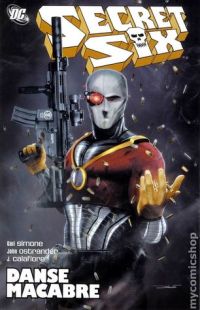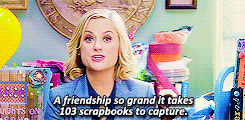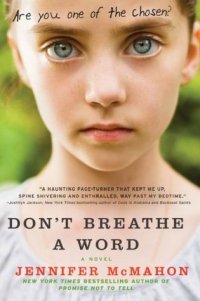
Book: “Secret Six (Vol. 3): Danse Macabre” by Gail Simone, John Ostrander, Jim Califiore (Ill.), Peter Nguyen (Ill.), and Doug Hazlewood (Ill.).
Publishing Info: DC Comics, December 2010
Where Did I Get This Book: The library!
Book Description from Goodreads: John Ostrander, the co-creator of the SUICIDE SQUAD, teams with fan-favorite writer Gail Simone for this epic team-up between the SECRET SIX and the SUICIDE SQUAD. Amanda Waller and her Suicide Squad capture Deadshot to try to force him to rejoin their ranks, but his current teammates in the Secret Six don’t see that happening any time soon. As the two groups begin to go toe-to-toe, the Black Lanterns show up and force the teams to join forces and put aside their differences in order to defeat the heroes and villains that have risen from the dead.
Review: One of my bigger apprehensions about getting into a long series or comic arc is that the story lines will start to lose their sustainability. Sadly, this has started to happen for me and the Secret Six. The good news is that it is still a very strong comic, and I’m hoping that it just had a little hiccup. But I want to talk positives first. It was really neat to see Amanda Waller show up in this arc. For those who may not know (but many of you may know by summer’s end), Amanda Waller is a decidedly shaded grey character from the DC universe who is also in charge of The Suicide Squad. Since Deadshot has done time with them as well, she comes into the storyline in hopes of poaching him back. Of course, his current teammates have opinions on this, and they are not going to let him go without a fight (even if there is some infighting going on amongst the Six as well, what with Bane the self appointed new leader and replacing Scandal with Black Alice).
While it was fun seeing a cameo from The Suicide Squad (specifically Waller, a badass boss who knows what she wants and is super awesome), there was another cameo of sorts that, when combined with the OTHER cameo, made this story less about the Six and more about the DC Universe as a whole at the time of it’s writing. That is The Blackest Night arc, in which Black Lanterns (not Green nor Red) arrive on the scene and start resurrecting the dead, a huge problem when faced with a bunch of dead antagonists. I know this was one of those large spanning plots that DC likes to do from time to time, but seeing as I am not familiar with Green Lantern and his mythos, nor have I read Blackest Night in any form, I found myself more irritated that Secret Six got pulled into this whole thing than excited about the crossover. Maybe if I knew more about the Black Lanterns things would be different. But I’m not convinced.
I am also very done with the unnecessary drama of betrayal and mistrust. Can we go one arc without The Six having issues with each other in one form or another? I am legitimately frustrated that Bane and Scandal are on the outs as of now, because I just want this group to have a good dynamic. I do believe that villains can, in fact, have good partnerships, and if they were able to have good partnerships it would make these already very interesting and rewarding characters all the more interesting and rewarding. Instead we get a group of people who, yes, thus far have come together in dark times and crisis. But I feel like it’s building up for a break in the team, and I don’t want that because 1) it’s kind of an obvious drama play, and 2) I just want them all happy and cooperative, okay? There also wasn’t really a funny little side moment in this one, as the standalone story was about Deadshot and how bitter he is. Not a lot of belly laughs in that one, guys. And that was a serious detriment to the collection. I’m hoping that isn’t a sign of what is to come in the last three volumes…
I remain mostly optimistic about the Six, as we are getting back to the base plot and we may be seeing more of Amanda Waller along with our misfits. As of this writing I am still waiting for Volume 4 from the library, so there may be a gap before I can continue the adventures. Here’s hoping for more Jeanette, more Catman, and more unity!
Rating 6: While there is still strength and creativity, sidetracks to Blackest Night and some repetitive storytelling made this the weakest volume in the series thus far.
Reader’s Advisory:
“Secret Six (Vol. 3): Danse Macabre” is included in these Goodreads lists: “Graphic Novels for Adults and Young Adults” and “Diverse Heroes in Comics/Graphic Novels”
Find “Secret Six (Vol. 3): Danse Macabre” at your library using WorldCat!
Previous Reviews of “Secret Six”: “Villains United”, “Unhinged“, “Depths”























 Book: “Doomsday Book” by Connie Willis
Book: “Doomsday Book” by Connie Willis
 Book: “You” by Caroline Kepnes
Book: “You” by Caroline Kepnes Book: “The Providence of Fire” by Brian Staveley
Book: “The Providence of Fire” by Brian Staveley




 Review: “City of Stairs” by Robert Jackson Bennett
Review: “City of Stairs” by Robert Jackson Bennett Book: “Don’t Breathe A Word” by Jennifer McMahon, Lily Rains (Narrator)
Book: “Don’t Breathe A Word” by Jennifer McMahon, Lily Rains (Narrator)
 Book: “Fire Touched” by Patricia Briggs
Book: “Fire Touched” by Patricia Briggs